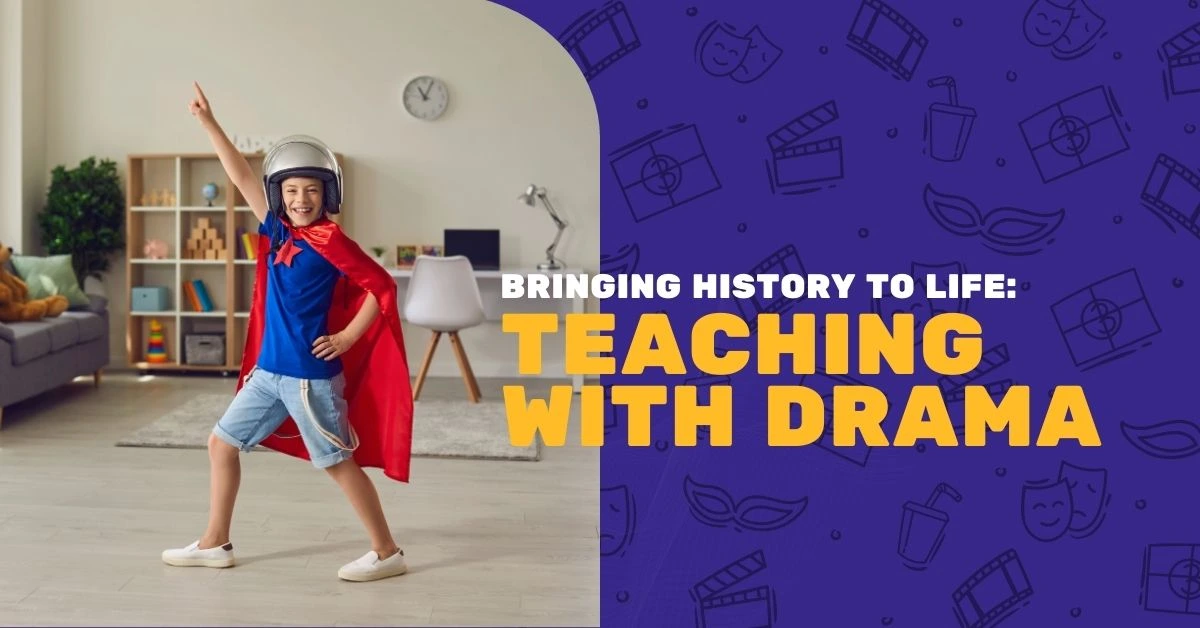History is often seen as a static subject confined to textbooks and timelines. Yet, for homeschooling parents eager to ignite a passion for the past in their children, history can become a dynamic, living narrative. Enter the world of dramas and role-playing—a gateway to exploring historical events and figures in a way that textbooks simply cannot capture. This approach not only makes learning engaging but also deepens students’ understanding by allowing them to step into the shoes of those who lived through history.
In this post, we will explore how homeschooling parents can use dramas and role-playing as powerful educational tools. We’ll discuss their benefits, offer practical strategies for implementation, and provide resources to help you get started. By the end of this guide, you’ll be equipped with the knowledge to transform your history lessons into immersive experiences that captivate and educate your children.
The Benefits Of History For Homeschoolers
Teaching history through dramas and role-playing offers numerous educational, social, and emotional benefits that can greatly enhance the homeschooling experience. Firstly, it allows students to internalize historical events in a way that’s more memorable than traditional teaching methods. By acting out a historical figure’s decisions and challenges, students develop a deeper understanding of the complexities and nuances of history. Socially, role-playing encourages collaboration and communication among children. When students work together to enact scenes or debates from history, they learn to listen, negotiate, and express their ideas effectively. These are vital skills not just for academic success, but for life beyond school.
Furthermore, role-playing can bridge the gap between solitary study and social learning, helping homeschooled students feel more connected to the material and to each other. Emotionally, stepping into the roles of historical figures fosters empathy and critical thinking. Students begin to see historical events from different perspectives, understanding the human emotions and motivations behind them. This empathetic approach helps children to appreciate the complexity of human decisions and the impact they have had throughout history.
Practical Strategies For Implementing Dramas And Role-Playing
Integrating drama and role-playing into your homeschool curriculum doesn’t require a theater degree or professional acting skills. Here are some practical strategies to start bringing history to life in your lessons. Begin by selecting an event or period that aligns with your educational goals and your child’s interests. This could range from the signing of the Magna Carta to the adventures of early Canadian explorers. Next, create scenarios or scripts that allow your child to engage with the material actively. These can be as simple as reading dialogues from famous speeches or as complex as staging a play about a historical event. Encourage creativity and improvisation, and remember that the goal is engagement, not perfection.
Role-playing games (RPGs) are also an excellent way to bring history to life. These games allow students to take on the roles of historical characters or fictional personas within a historical setting, making decisions and facing challenges based on historical events. RPGs can be adapted for various age groups and learning levels, providing an interactive and immersive learning experience. You can also integrate drama and role-playing into subjects like math and science. For instance, acting out the trial of Galileo can spark discussions about scientific inquiry and the clash between science and religion. Similarly, portraying mathematicians like Ada Lovelace or Albert Einstein can lead to a greater appreciation of their contributions. These cross-disciplinary connections enrich the learning experience and help students see the interconnectedness of knowledge.

Another effective strategy is to design a historical simulation. In this approach, students take on roles and interact based on their character’s historical context, responding to scenarios that mirror actual historical events. This can be particularly engaging when covering significant political events or battles, like the debates of the Constitutional Convention or the strategic decisions of World War II generals. Providing students with background information and specific objectives for their roles can challenge them to think critically and make decisions that reflect their character’s historical perspective. This method not only enlivens historical facts but also encourages analytical thinking and problem-solving.
To further enhance the role-playing experience, consider incorporating multimedia elements. Visual aids, such as period costumes or props, can add authenticity and help students immerse themselves in the time period. Music and sound effects can also set the stage for a more engaging atmosphere, particularly if they reflect the era being studied. Additionally, using homeschool history video recordings or presentations as part of the role-play can allow students to share their performances with others or to reflect on their learning process.
By integrating various forms of media, you can cater to different learning styles and deepen the educational impact of the activity. Another engaging format is the use of character diaries or journals. Students write from the perspective of a historical figure, detailing daily life, challenges, and key events. This encourages deep research and creative writing skills while also fostering empathy and perspective-taking. Such exercises allow students to explore history on a personal level, giving them insight into the lives of individuals who shaped the past.
Tools And Resources For Homeschooling Parents
Equipped with the right tools and resources, homeschooling parents can easily incorporate dramas and role-playing into their history lessons. Several websites offer free and paid resources, such as role-playing scripts, lesson plans, and historical reenactment guides. Websites like Teachers Pay Teachers and Etsy have valuable educational content created by experienced educators and homeschoolers. Books are another excellent resource for bringing history to life. Historical fiction novels, biographies, and history-themed plays can provide inspiration and serve as a basis for dramatizations. Titles like “Johnny Tremain” or “The Witch of Blackbird Pond” offer rich narratives that lend themselves well to dramatization and discussion.
Online platforms such as YouTube and Vimeo host a wealth of educational videos and tutorials on historical dramas and role-playing. These platforms can provide visual aids and demonstrations to help parents and students understand how to execute role-playing activities effectively. Additionally, joining online homeschooling forums and communities can provide support, advice, and ideas from other parents who successfully use these techniques.
Making Learning More Interactive And Memorable
In conclusion, bringing history to life through dramas and role-playing is a powerful way to engage homeschooled children and make learning more interactive and memorable. The benefits are multifaceted—enhancing educational outcomes, fostering social skills, and developing emotional intelligence. By implementing the practical strategies and utilizing the tools and resources outlined in this guide, homeschooling parents can enrich their curriculum and inspire a love of history in their children.
If you’re looking to incorporate these techniques into your homeschooling routine, start small and gradually build up the complexity of your dramas and role-playing activities. Remember, the goal is not only to educate but also to excite and inspire your children. For more information and resources on homeschooling history, consider consulting experts in the field or joining a homeschooling community to exchange ideas and experiences. Your next step could be as simple as choosing a historical figure your child is interested in and starting with a character diary or a mini-role play. With creativity and enthusiasm, you can turn history lessons into adventures that your children will cherish and remember for years to come.





